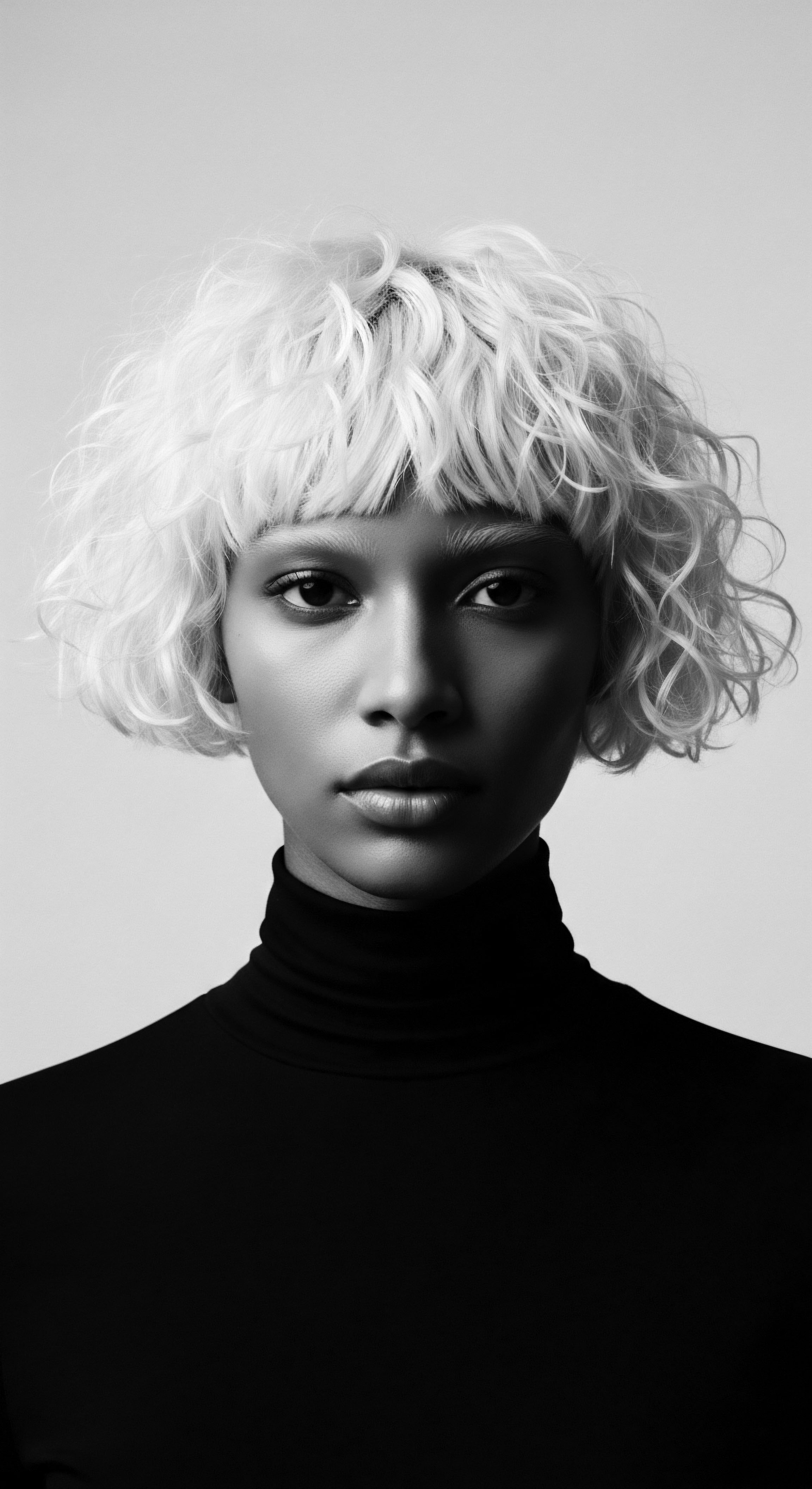
Roots
The very strands that crown us carry histories stretching beyond memory, a vibrant archive etched in each coil, each curl. For those of us with textured hair, these tresses are not merely fibers emerging from the scalp; they are living testaments to generations of wisdom, of creativity, and of an undeniable spirit. To speak of the CROWN Act is to speak of how law, a modern construct, seeks to honor and safeguard this profoundly personal and public heritage.
It is to acknowledge that hair, in its natural, ancestral forms, has long been a site of both adoration and adversity, a battleground for identity and self-determination. This legislation steps into a legacy, not to invent something new, but to formally recognize and protect what has always been—the inherent beauty and cultural significance of Black and mixed-race hair.

Ancestral Structures and Modern Understanding
Our hair, in its countless variations of texture, density, and pattern, represents a biological masterpiece. From an elemental standpoint, every hair strand is a protein filament, primarily composed of keratin. However, the unique qualities of textured hair—its incredible strength, its capacity for shrinkage, its distinctive curl patterns ranging from loose waves to tightly packed coils—are dictated by the shape of the hair follicle and the distribution of keratin within the strand.
A follicle that is more elliptical or flat tends to produce hair with a more pronounced curl or coil. This inherent structure, passed down through lineages, is what the CROWN Act ultimately defends.
For centuries, before the advent of microscopes and molecular biology, ancestral communities possessed a profound practical understanding of these structures. They learned to work with the hair, not against it, developing intricate styling techniques that honored its natural inclinations. They understood, intuitively, that forcing straightness upon highly coily hair could damage its integrity.
This knowledge was observational, passed from elder to youth, often in communal settings, and it formed the bedrock of hair care rituals. The Act, then, serves as a contemporary legal echo of this ancient respect for natural hair anatomy.
The CROWN Act stands as a contemporary legal guardian of deeply rooted ancestral hair structures and the cultural practices that have always celebrated them.

Cultural Classifications and Their Reverence
While modern hair classification systems like Andre Walker’s or the more detailed systems attempting to categorize curl patterns (e.g. 3a, 4c) are relatively recent inventions, ancestral communities had their own ways of understanding hair diversity. These classifications were less about numerical scales and more about communal identity, spiritual connection, and social markers.
Hair was often braided or styled to denote marital status, age, tribe, or religious belief. The specific patterns and adornments carried messages, a non-verbal language understood within the collective.
The CROWN Act directly counters the historical bias embedded within many contemporary societal norms that often favor Eurocentric hair textures. In workplaces and schools, the notion of “professionalism” was historically intertwined with straight hair, leading to discrimination against individuals wearing natural styles like locs, braids, or Afros. Such policies implicitly devalued the very hair types that are central to Black and mixed-race identity.
By legally protecting these styles, the Act forces a re-evaluation of these biased standards, asserting that ancestral hair, in its natural state or traditionally styled, is inherently appropriate and professional. It seeks to dismantle the lingering effects of systemic prejudice that sought to impose uniformity rather than celebrate the diversity of human heritage.
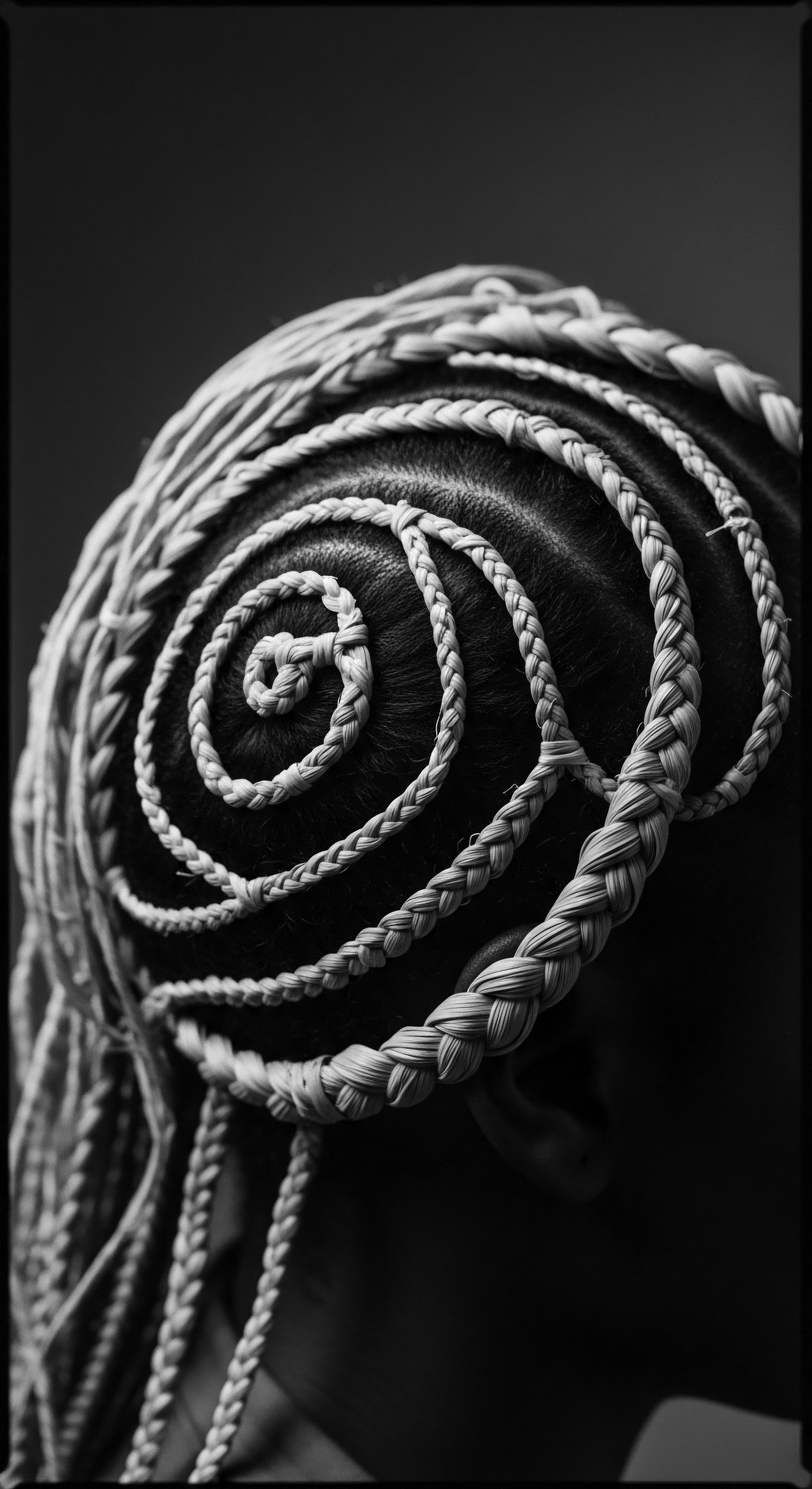
A Lexicon of Legacy
Within the realm of textured hair, a rich vocabulary has evolved, some terms dating back generations, others finding their voice in contemporary movements. Understanding these terms is essential to grasping the heritage the CROWN Act seeks to protect.
- Locs ❉ These are matted sections of hair, formed naturally or with various techniques, a practice with ancient roots across numerous African and Indigenous cultures, symbolizing spiritual connection, wisdom, or identity.
- Braids ❉ Intricate interweaving of three or more hair strands, a foundational practice in African hair artistry, encompassing styles like cornrows, box braids, and micro braids, each with cultural significance.
- Twists ❉ Two strands of hair wrapped around each other, a versatile protective style that can be worn in various sizes and patterns, often seen as a simpler yet equally protective ancestral method.
This lexicon is not mere slang; it represents centuries of ingenuity and cultural continuity. When a person wears their hair in one of these styles, they are often making a statement, conscious or unconscious, about their connection to a broader heritage. The CROWN Act safeguards the freedom to speak this hair language without fear of reprisal.

The Cycles of Hair and Historical Influences
Hair growth follows a cyclical pattern ❉ anagen (growth), catagen (transition), and telogen (rest). While this biological process is universal, the manifestation of textured hair through these cycles, especially its density and tendency to shrink, often led to specific care practices in ancestral communities. Environmental factors, nutrition, and even societal conditions played a part in how these cycles were managed. For instance, in regions with harsh sun or arid climates, protective styles were not just aesthetic choices; they were crucial for maintaining hair health, reducing moisture loss, and preventing breakage.
The Act, by protecting these styles, implicitly acknowledges the wisdom of practices born from these very environmental and historical realities. It ensures that modern discrimination does not negate the protective benefits and cultural continuity these ancestral practices represent.
| Ancestral Hair Practice Braiding |
| Historical Significance Community bonding, social status markers, spiritual rituals, protection from elements. |
| How the CROWN Act Protects Ensures freedom to wear braids (cornrows, box braids, etc.) in schools and workplaces without penalty. |
| Ancestral Hair Practice Locing |
| Historical Significance Spiritual connection, identity, natural evolution of hair, resistance against forced assimilation. |
| How the CROWN Act Protects Prohibits discrimination based on locs, affirming them as culturally significant and professional. |
| Ancestral Hair Practice Afro Styles |
| Historical Significance Symbol of Black power, natural beauty, cultural pride, and resistance against assimilation. |
| How the CROWN Act Protects Protects the right to wear natural, untampered hair texture in its full form. |
| Ancestral Hair Practice The CROWN Act codifies respect for the continuum of textured hair heritage, from ancient practices to contemporary expressions. |
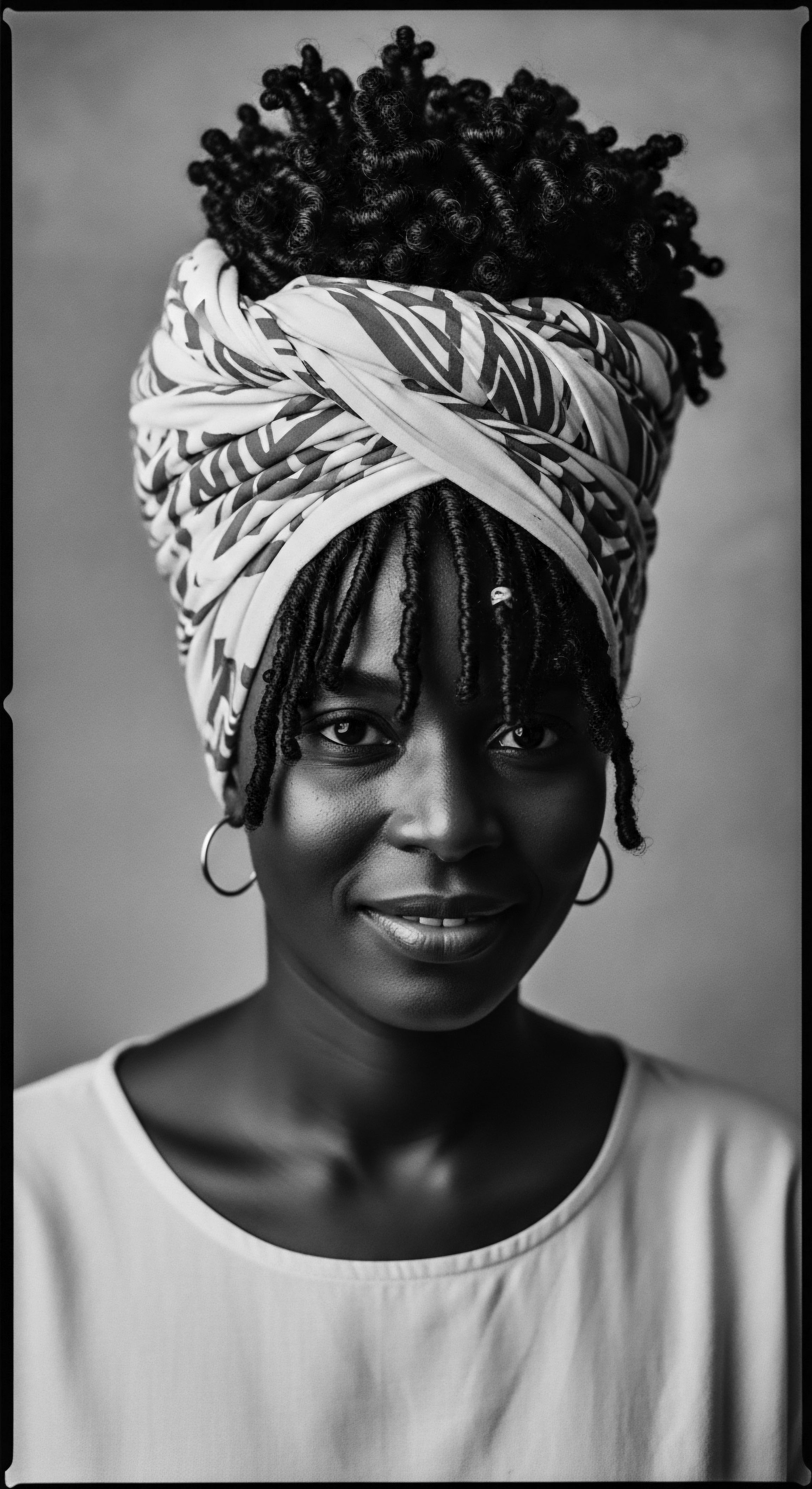
Ritual
The act of styling textured hair transcends mere aesthetics; it is a ritual, a profound connection to generations of artistry and adaptation. From the deft hands of an elder creating intricate patterns on a child’s scalp to the communal gathering for hair care, these moments are steeped in cultural memory. The CROWN Act steps into this space, acknowledging that these styling traditions, far from being superficial, are vital expressions of identity and heritage. It guards the right to honor these inherited practices in public and professional spheres, a crucial step in dismantling historical biases that sought to diminish their significance.

Protective Styling as Ancestral Wisdom
Protective styles are the cornerstone of textured hair care, a testament to ancestral ingenuity. These styles—braids, twists, locs, buns, and Bantu knots—serve multiple purposes ❉ they shield delicate ends from manipulation, reduce breakage, and retain moisture. Beyond their practical benefits, they are a vibrant cultural encyclopedia, each style often carrying specific historical or regional significance.
For example, cornrows, with their roots in ancient African civilizations, were sometimes used to map escape routes during enslavement or to carry seeds for planting. They were, and remain, a language of survival and resilience.
The CROWN Act directly addresses the insidious forms of discrimination that have historically targeted these very styles. Schools have sent children home, and employers have dismissed individuals for wearing cornrows or locs, deeming them “unprofessional” or “distracting.” Such rulings not only caused emotional distress but also perpetuated economic and educational inequities. By legally affirming the right to wear these styles, the Act ensures that individuals are not penalized for expressing their racial or cultural identity through their hair. It validates a heritage of protective practices that were once considered barriers to mainstream acceptance, transforming them into legally protected expressions of self.
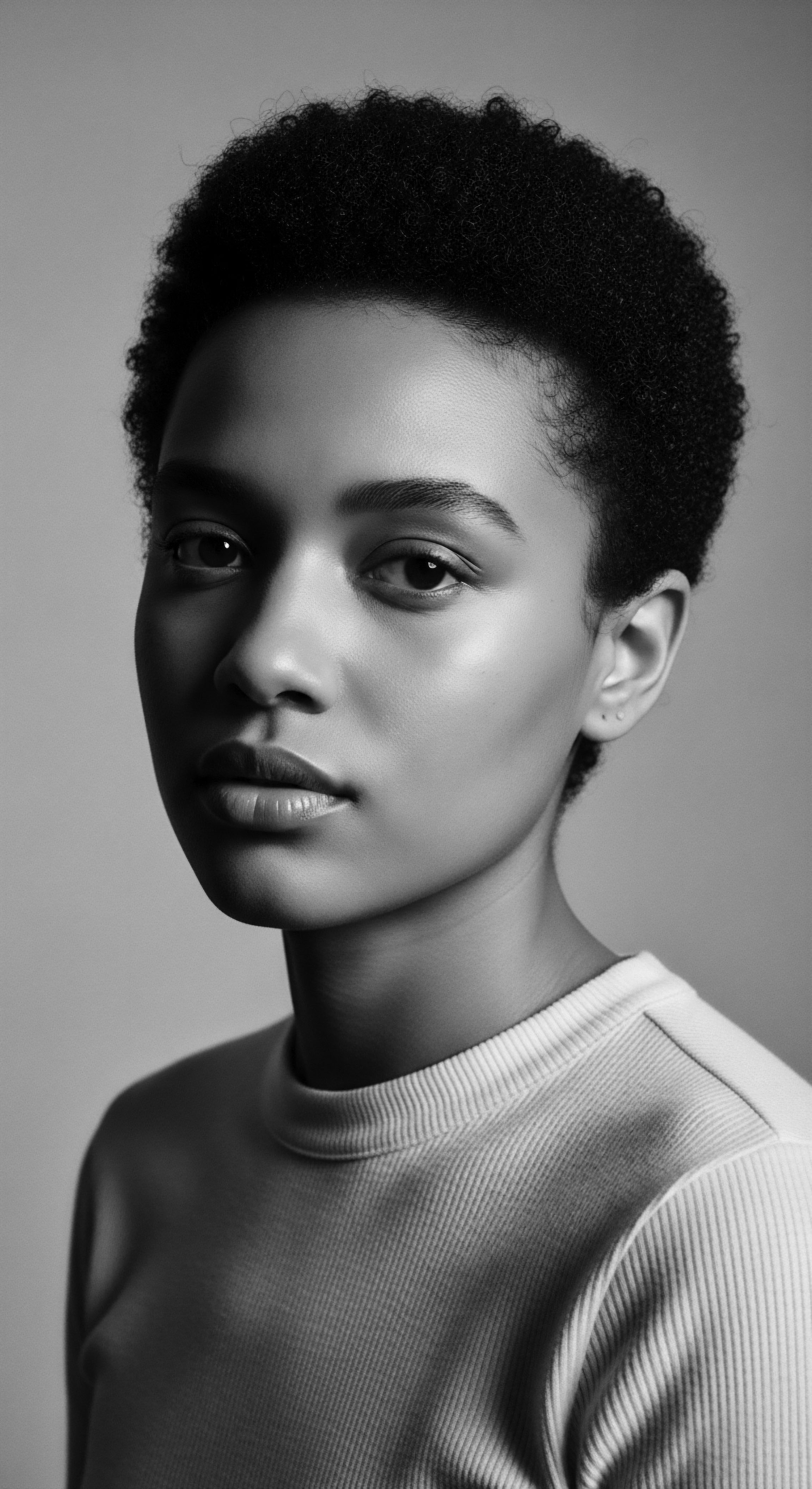
Natural Definition and Traditional Methods
The beauty of textured hair also lies in its ability to be worn in its natural, unbound state, celebrating its innate curl patterns and volume. Techniques such as finger coiling, wash-and-gos, and shingling, while modern terms, draw inspiration from a long heritage of working with hair’s natural inclinations. Ancestral practices often involved the use of natural ingredients—clays, plant extracts, and oils—to cleanse, condition, and define curls without harsh chemicals or extreme manipulation. The knowledge of these natural forms of hair care, passed down through oral traditions and communal learning, emphasized nourishment and respect for the hair’s inherent structure.
Hair rituals, extending from ancient braiding techniques to contemporary natural definition, are deeply rooted in heritage, now formally protected by the CROWN Act.
The CROWN Act’s provisions ensure that individuals choosing to wear their hair in its naturally defined state are equally protected. This is particularly relevant given the societal pressure to alter textured hair to conform to straightened ideals. When an Afro or a full head of coils is deemed “too large” or “unruly” in a professional setting, it is a direct assault on the right to express one’s natural heritage.
The Act offers a legal recourse, allowing individuals to affirm their authentic selves without fear of professional or social exclusion based on their natural hair’s volume and form. It underscores the right to embody one’s identity through hair, unburdened by archaic standards of appearance.

How does the CROWN Act Recognize Traditional Tools and Adornments?
Historically, tools and adornments played a significant role in styling and symbolizing heritage within Black and mixed-race communities. Combs carved from wood or bone, intricate hair picks, and a variety of beads, shells, and threads were not merely functional objects but were imbued with cultural meaning and artistry. These tools and adornments were often specific to tribal groups, rites of passage, or social hierarchy. The practice of hair braiding, for instance, often involved the use of these specialized tools and the incorporation of meaningful elements to enhance the style.
While the CROWN Act primarily focuses on the protection of hair texture and styles associated with race, its broader impact extends to fostering an environment where the cultural elements surrounding these styles can also be appreciated without prejudice. By prohibiting discrimination based on traditional hair styles, the Act implicitly creates a space for the associated cultural practices, including the use of traditional tools and adornments, to be recognized and respected. For instance, if a specific traditional style inherently incorporates beads or cowrie shells, the protection of the style itself inherently safeguards the right to wear those adornments as part of the cultural expression. This encourages a more holistic acceptance of Black and mixed-race hair heritage in public and professional spaces, moving beyond mere tolerance to genuine affirmation.
| Styling Category Coily/Kinky Hair Styles |
| Ancestral Context Afros, twists, Bantu knots; symbols of natural beauty, resistance, and cultural identity. |
| Modern Discrimination and CROWN Act Impact Often deemed "unprofessional" or "unruly." CROWN Act affirms these styles as protected racial characteristics, challenging biased dress codes. |
| Styling Category Braided Styles |
| Ancestral Context Cornrows, box braids; used for identification, mapping, protective benefits, and community bonds. |
| Modern Discrimination and CROWN Act Impact Frequently targeted in schools and workplaces for being "distracting" or "unclean." The Act explicitly includes braids in its protections. |
| Styling Category Locs |
| Ancestral Context Spiritual significance, maturity, wisdom across various African and Indigenous cultures. |
| Modern Discrimination and CROWN Act Impact Subject to severe discrimination, often viewed as unkempt or radical. The Act explicitly covers locs, validating their place in professional and educational settings. |
| Styling Category The CROWN Act bridges the gap between historical hair traditions and contemporary legal protections, ensuring the legacy of styling continues without prejudice. |
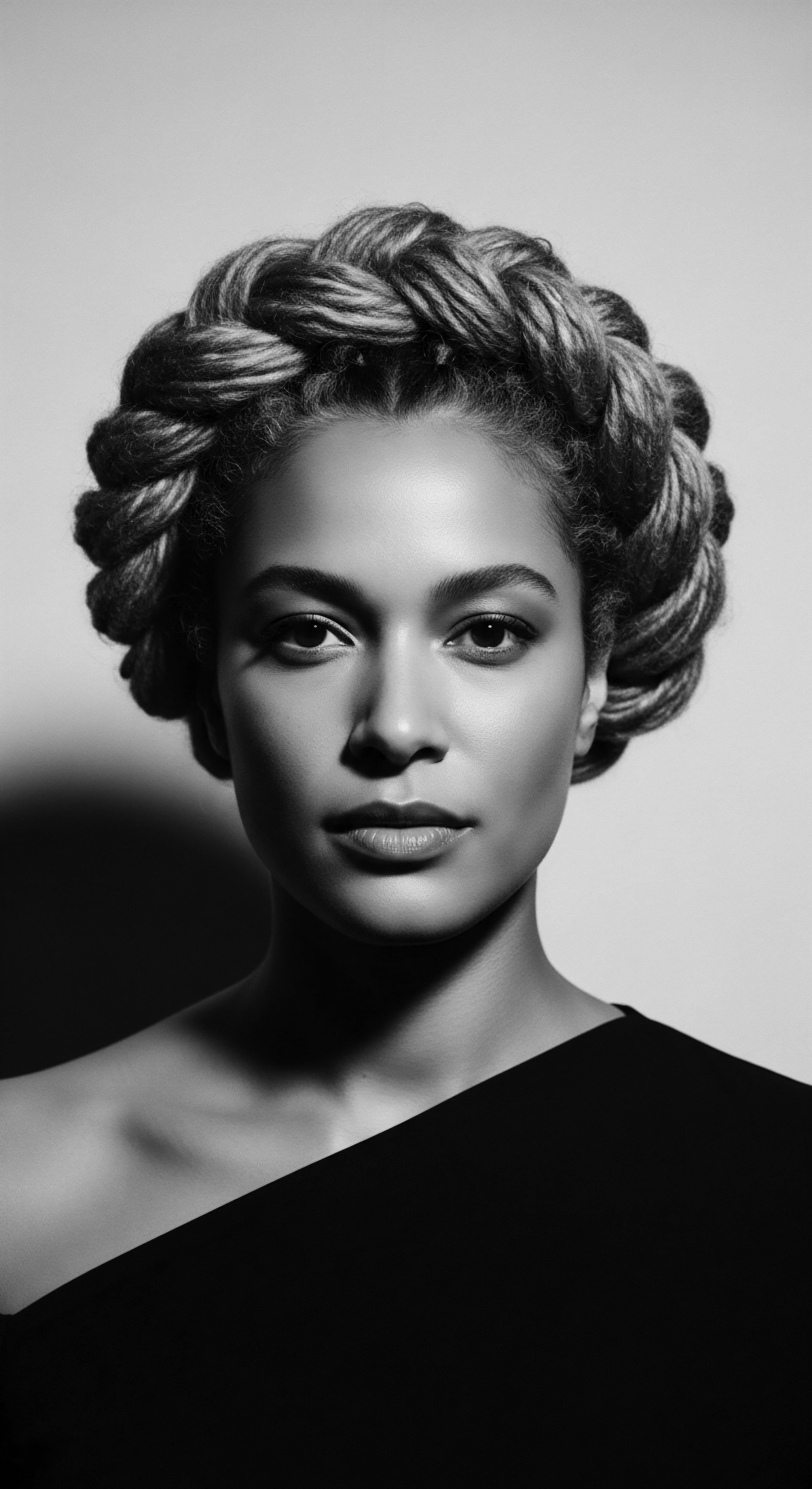
Relay
The journey of textured hair care is a relay across generations, a continuous passing of ancestral wisdom, refined by new knowledge and challenges. It is a dialogue between the old ways and the new, deeply rooted in the concept of holistic wellbeing. The CROWN Act, in this context, does not merely address legal discrimination; it cultivates an environment where this relay can proceed unimpeded, allowing traditional care practices and problem-solving approaches to be honored and sustained. This legislative action provides a crucial legal foundation for individuals to express their hair heritage freely, impacting not just external appearance but also the inner experience of self-acceptance and cultural pride.
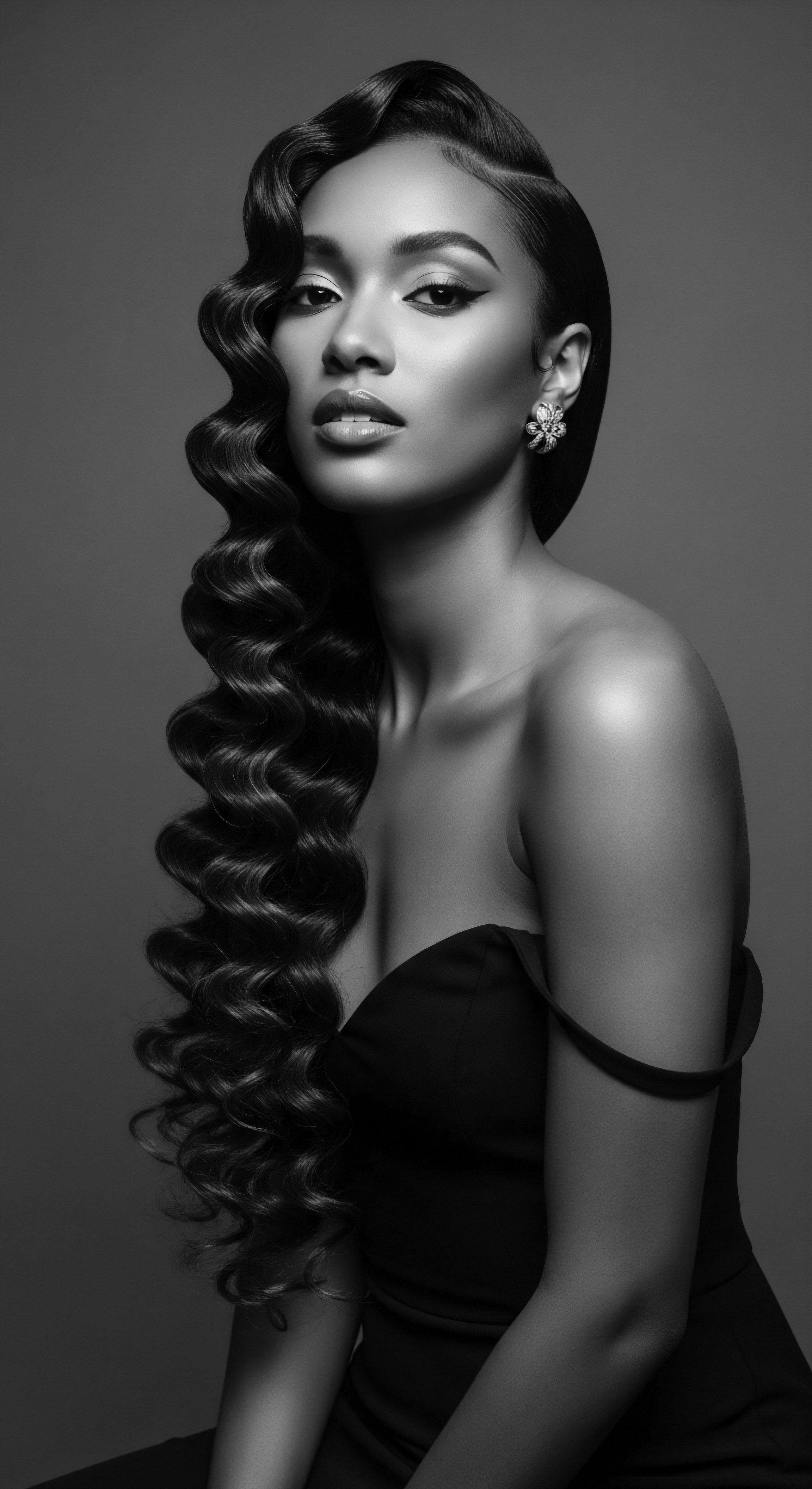
Building Personalized Regimens from Ancestral Blueprints
Creating a personalized hair regimen for textured hair is akin to assembling a complex herbal remedy—it requires understanding the unique needs of the individual while drawing from a vast apothecary of knowledge. Ancestral wisdom often emphasized deep conditioning, scalp massages, and the use of natural elements from the environment. Ingredients like shea butter, various plant oils, and African black soap were not just cleansing agents; they were revered for their nourishing and healing properties. These were not generic applications; specific plants or practices were often selected based on individual hair type, local climate, and even spiritual beliefs.
Modern hair science, in many instances, validates these ancient approaches. For instance, the occlusive properties of shea butter, preventing moisture loss, align with its traditional use for conditioning. The CROWN Act indirectly supports this fusion of ancient and modern care. When individuals are pressured to chemically straighten their hair to conform to discriminatory standards, they are often forced into regimens that are detrimental to their hair’s natural health and structure.
By removing this pressure, the Act allows for the choice of holistic, heritage-informed care practices that truly benefit textured hair, fostering long-term health and vitality rather than damage caused by forced alteration. It enables a truer connection to the physical strand and its ancestral care legacy.
The CROWN Act allows for the reclamation of ancestral hair care principles, fostering holistic wellness through culturally relevant regimens.

The Nighttime Sanctuary and Bonnet Wisdom
The ritual of nighttime hair protection holds immense cultural significance for textured hair. Bonnets, wraps, and silk or satin pillowcases are not contemporary fads; they are modern iterations of ancestral practices aimed at preserving hair moisture, preventing tangles, and minimizing breakage during sleep. In various African cultures, head coverings, often made from natural fabrics, were used for protection against the elements, for spiritual purposes, and for maintaining elaborate hairstyles overnight. These practices were a testament to the value placed on hair and the meticulous care given to its preservation.
The wisdom of these nighttime rituals is scientifically sound ❉ silk and satin create less friction than cotton, thereby reducing frizz and breakage. The CROWN Act, while not directly legislating bedtime habits, creates a societal atmosphere where the very hair that benefits from these practices is accepted and celebrated. If textured hair were still widely stigmatized, the incentive to maintain its health and integrity through such diligent rituals would diminish.
By legitimizing ancestral hair in public spaces, the Act reinforces the value of private care rituals that have been passed down through generations. It supports the entire ecosystem of textured hair care, from the visible styles to the unseen efforts of preservation.
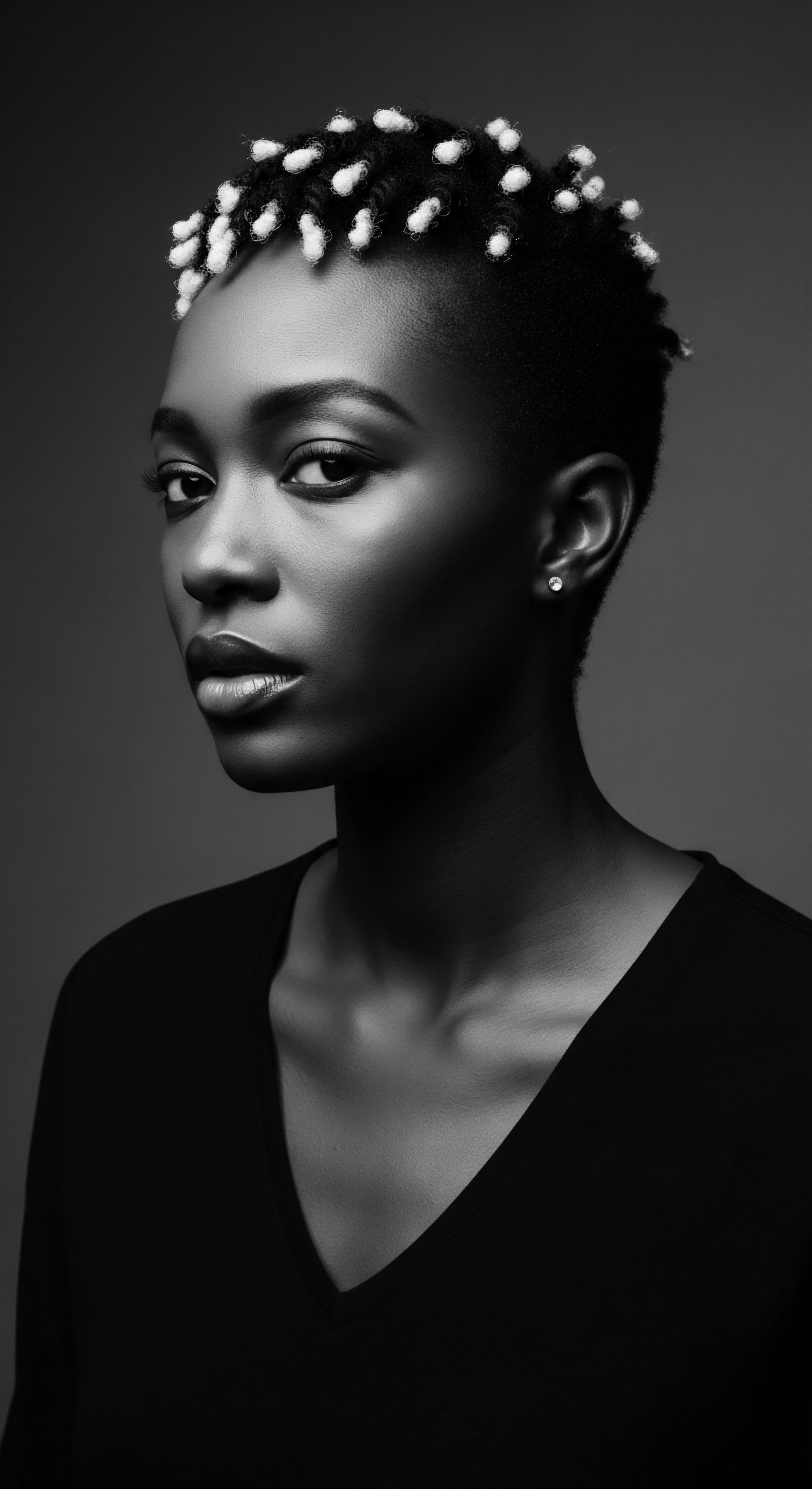
How does the CROWN Act Influence the Choice of Ingredients for Textured Hair?
For millennia, ancestral communities relied on the bounty of their local environments to care for their hair. This often involved a deep understanding of botanical properties. Consider the widespread use of aloe vera for its hydrating and soothing qualities, or various plant-based oils like coconut or argan, known for their nourishing attributes.
These ingredients were chosen not just for their immediate effect, but also for their perceived spiritual resonance and their role in maintaining long-term hair health within the context of their worldview. This contrasts sharply with the chemically laden products that gained prominence during periods of forced assimilation, often designed to alter rather than nurture textured hair.
The CROWN Act, by removing the legal imperative to alter one’s hair to conform to Eurocentric standards, indirectly champions the use of these heritage-rich ingredients. When individuals are free to wear their natural textures and protective styles, they are more inclined to seek out products that support these forms rather than suppress them. This shift encourages a return to or a deeper exploration of traditional ingredients that work harmoniously with textured hair’s unique biology.
It promotes a consumer market that values natural, ethnically sourced components, thereby reinforcing the economic and cultural significance of ancestral botanical knowledge. This legislation, therefore, plays a role in sustaining not just the hair, but also the agricultural and traditional medicinal practices tied to it.

Navigating Challenges with Inherited Resilience
Problem-solving for textured hair, whether addressing dryness, breakage, or scalp conditions, also draws from a rich heritage. Traditional healers and community elders often possessed a deep understanding of remedies derived from local flora. The application of certain herbal rinses for scalp health, or specific oils to combat dryness, were forms of applied science, honed over generations through observation and shared experience. These solutions were often holistic, viewing hair health as intertwined with overall well-being.
A powerful historical example of hair discrimination that the CROWN Act directly counters is the experience of DeAndre Arnold. In 2020, this Texas high school student was threatened with suspension and excluded from his graduation ceremony because his locs violated the school district’s dress code, despite having worn them for years. This incident, which gained national attention, starkly illustrated how dress code policies, often seemingly neutral, disproportionately impact Black students and their ability to express their cultural heritage through their hair. The CROWN Act directly addresses such scenarios by making it illegal to discriminate against students (or employees) for wearing natural or protective hairstyles.
In Arnold’s case, had the CROWN Act been in effect in his state at the time, his school’s action would have been unlawful, powerfully illuminating the Act’s direct connection to protecting Black experiences and ancestral practices from arbitrary and racially biased rules. (Thompson, 2020)
The CROWN Act provides a legal bulwark against the systemic issues that have historically complicated the textured hair journey. By mitigating discrimination, it reduces the pressure on individuals to resort to damaging chemical treatments or constant heat styling, which can exacerbate existing hair health issues. It empowers individuals to choose solutions that align with their hair type and cultural preferences, whether those are ancestral remedies or modern scientific innovations. The Act supports a paradigm where textured hair is seen as a gift, not a problem to be “fixed” or hidden, fostering a sense of liberation in navigating one’s hair health journey.
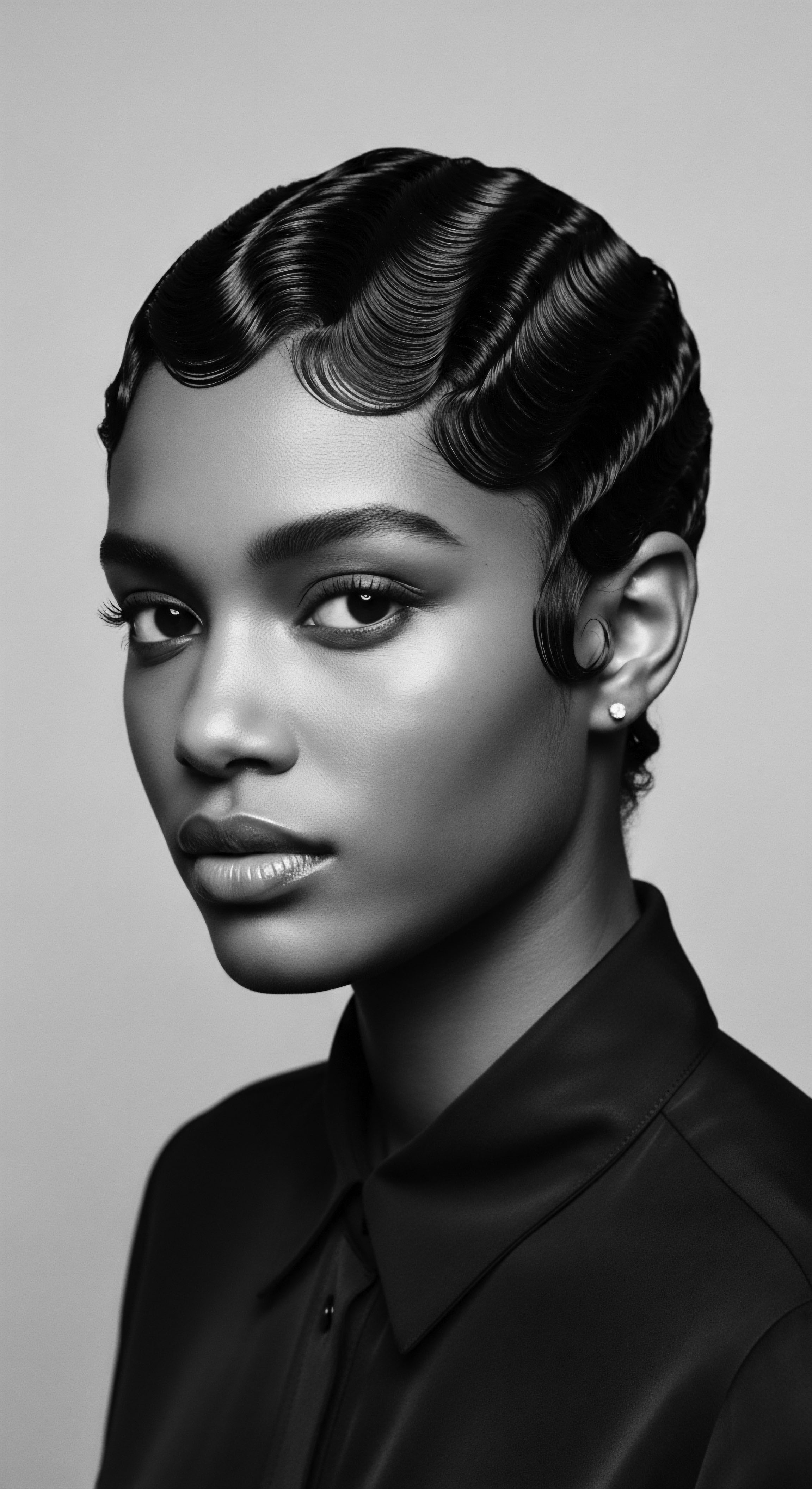
Reflection
To consider the CROWN Act is to pause at a vital juncture in the enduring saga of textured hair. It stands as a profound testament, a legislative echo of the truth whispered across generations ❉ our hair is inextricably tied to who we are, to our stories, our ancestors, and our collective spirit. This is not merely about preventing unfairness; it is about affirming a heritage that has resisted erasure through countless trials. Each protected coil, every celebrated loc, every honored braid becomes a living fiber in the grand, continuing expression of Black and mixed-race identity.
The ‘Soul of a Strand’ ethos reminds us that hair is more than keratin and pigment; it is a conduit of ancestral memory, a vibrant aspect of our living archives. The CROWN Act, through its legal framework, fortifies this archive, ensuring that the ancient rhythms of care, the artistry of traditional styling, and the sheer fortitude of self-acceptance can persist and thrive. It is a promise that the unique beauty and spiritual weight of textured hair will find its place, unburdened by prejudice, in every corner of our shared world. This movement, culminating in protective law, helps us truly see the splendor held within each strand, an affirmation of lineage and a radiant vision for what is yet to come.

References
- Thompson, Desiree. (2020). “Texas Teen DeAndre Arnold Forced To Cut Dreadlocks To Attend Graduation, Prom.” Essence Magazine.
- Hooks, bell. (1992). Black Looks ❉ Race and Representation. South End Press.
- Byrd, Ayana D. and Lori L. Tharps. (2014). Hair Story ❉ Untangling the Roots of Black Hair in America. St. Martin’s Griffin.
- Patton, Tracey Owusu. (2006). African-American Hair as Culture and Self-Expression. The Edwin Mellen Press.
- Banks, Ingrid. (2000). Hair Matters ❉ Beauty, Power, and Black Women’s Consciousness. New York University Press.
- Mercer, Kobena. (1987). “Black Hair/Style Politics.” New Formations, 3.
- Davis, Angela Y. (1981). Women, Race & Class. Random House.
